Abstract
Objective:
To characterize the risk of injury associated with 10 popular high school sports by comparing the relative frequency of injury and selected injury rates among sports, as well as the participation conditions within each sport.
Design and Setting:
A cohort observational study of high school athletes using a surveillance protocol whereby certified athletic trainers recorded data during the 1995-1997 academic years.
Subjects:
Players listed on the school's varsity team rosters for football, wrestling, baseball, field hockey, softball, girls' volleyball, boys' or girls' basketball, and boys' or girls' soccer.
Measurements:
Injuries and opportunities for injury (exposures) were recorded daily. The definition of reportable injury used in the study required that certified athletic trainers evaluate the injured players and subsequently restrict them from participation.
Results:
Football had the highest injury rate per 1000 athlete- exposures at 8.1, and volleyball had the lowest rate at 1.7. Only boys' (59.3%) and girls' (57.0%) soccer showed a larger proportion of reported injuries for games than practices, while volleyball was the only sport to demonstrate a higher injury rate per 1000 athlete-exposures for practices than for games. More than 73% of the injuries restricted players for fewer than 8 days. The proportion of knee injuries was highest for girls' soccer (19.4%) and lowest for baseball (10.5%). Among the studied sports, sprains and strains accounted for more than 50% of the injuries, except in field hockey (45.7%). Of the injuries requiring surgery, 60.3% were to the knee.
Conclusions:
An inherent risk of injury is associated with participation in high school sports based on the nature of the game and the activities of the players. Therefore, injury prevention programs should be in place for both practices and games. Preventing reinjury through daily injury management is a critical component of an injury prevention program. Although sports injuries cannot be entirely eliminated, consistent and professional evaluation of yearly injury patterns can provide focus for the development and evaluation of injury prevention strategies.
Keywords: injuries, risk, surveillance, epidemiology
Full text
PDF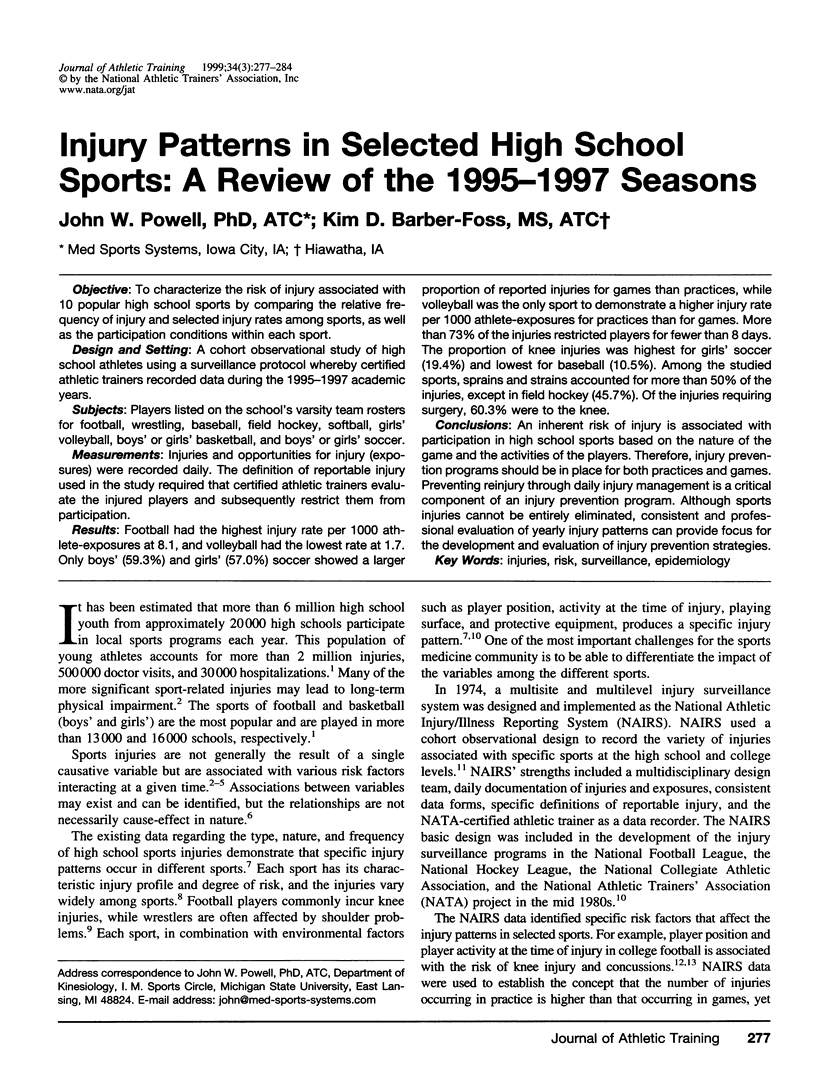
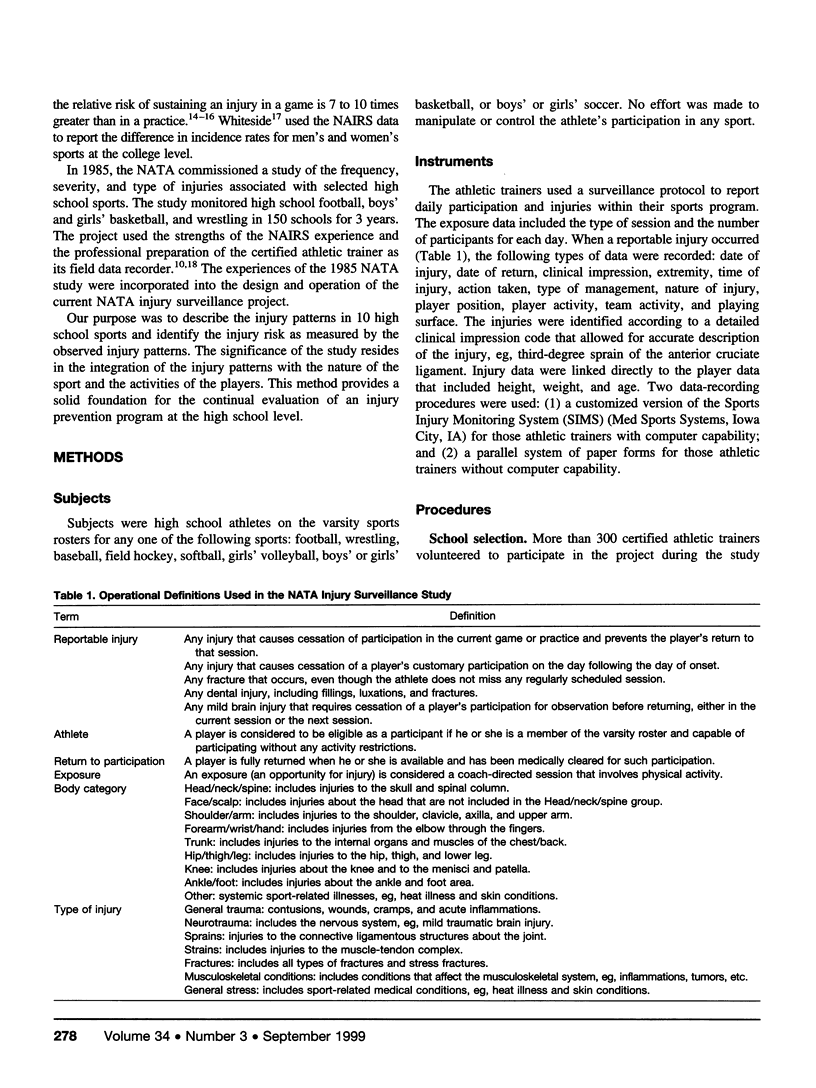
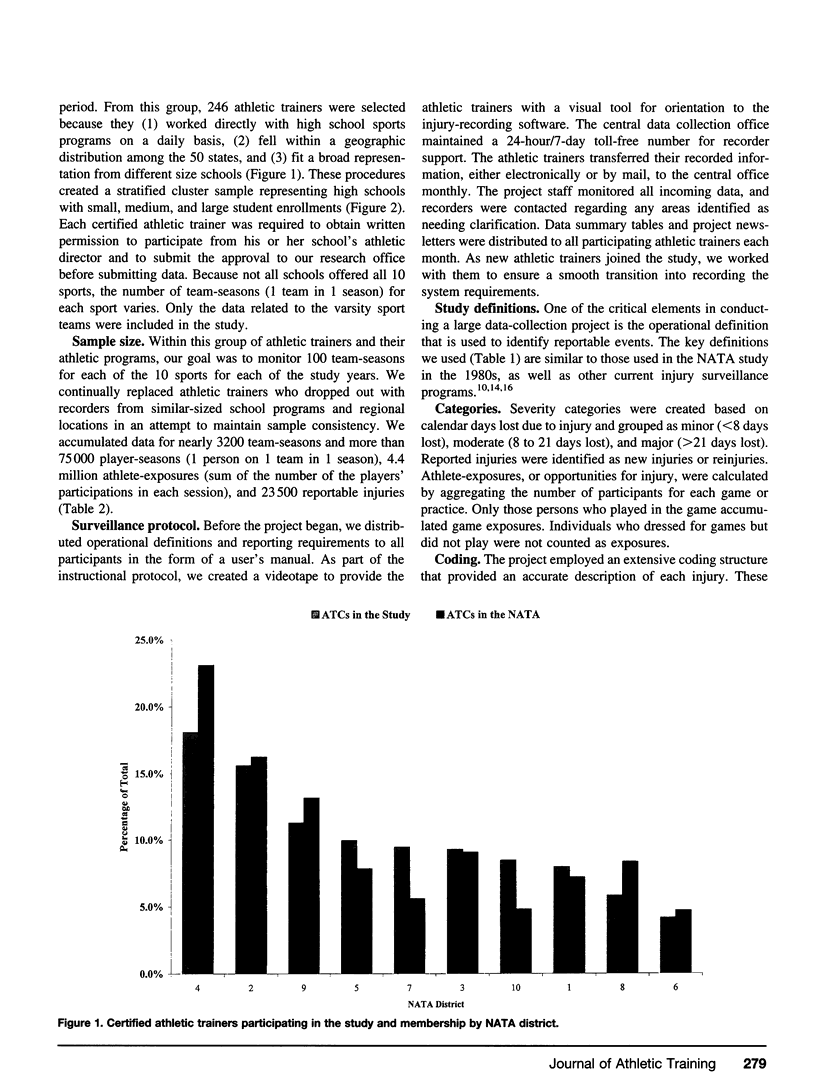
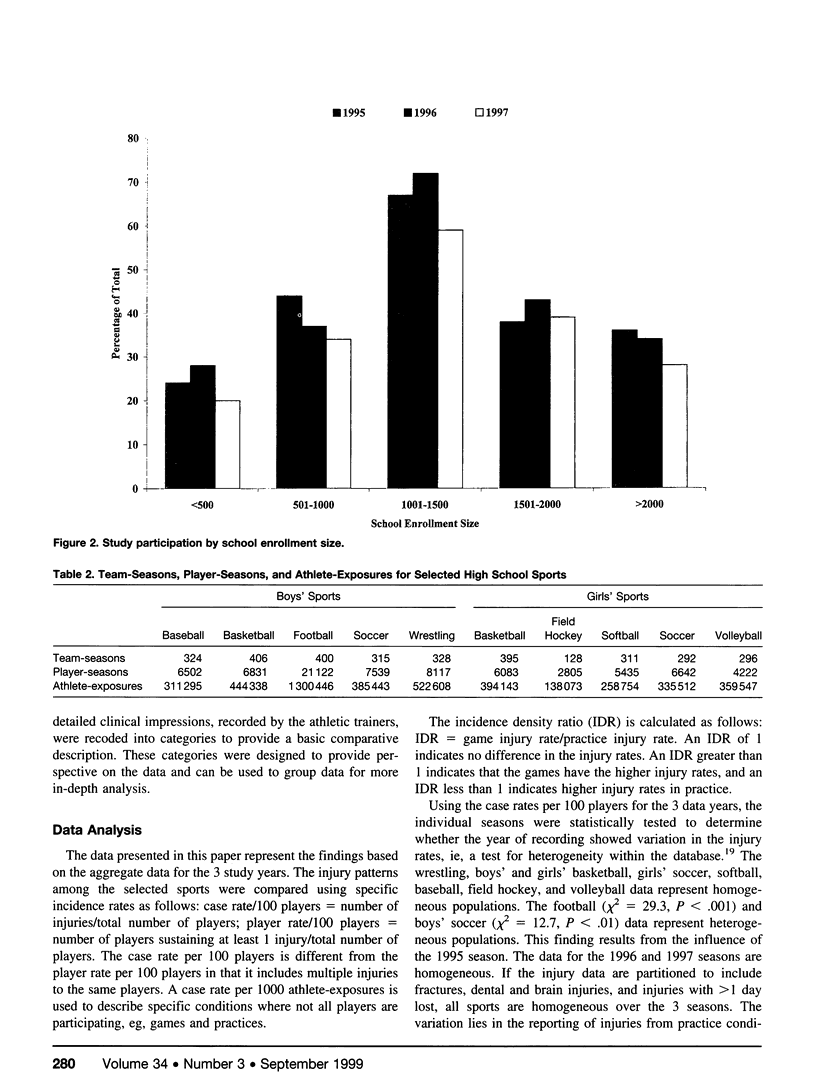
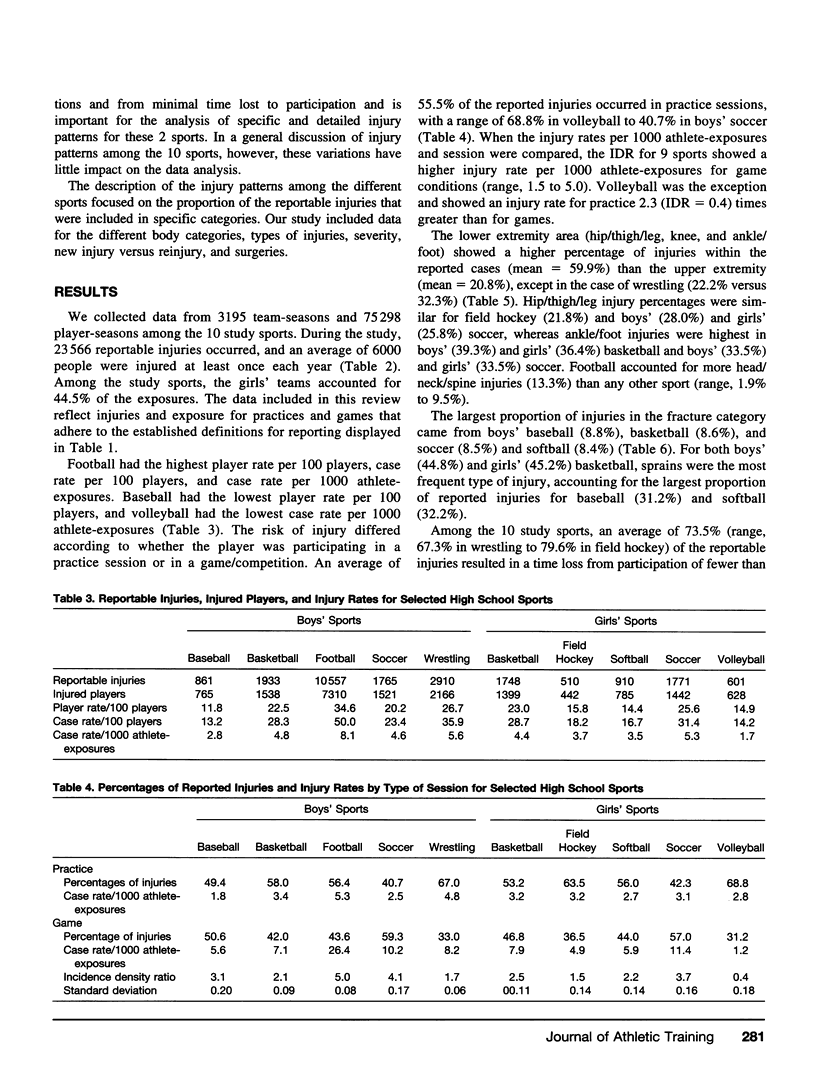
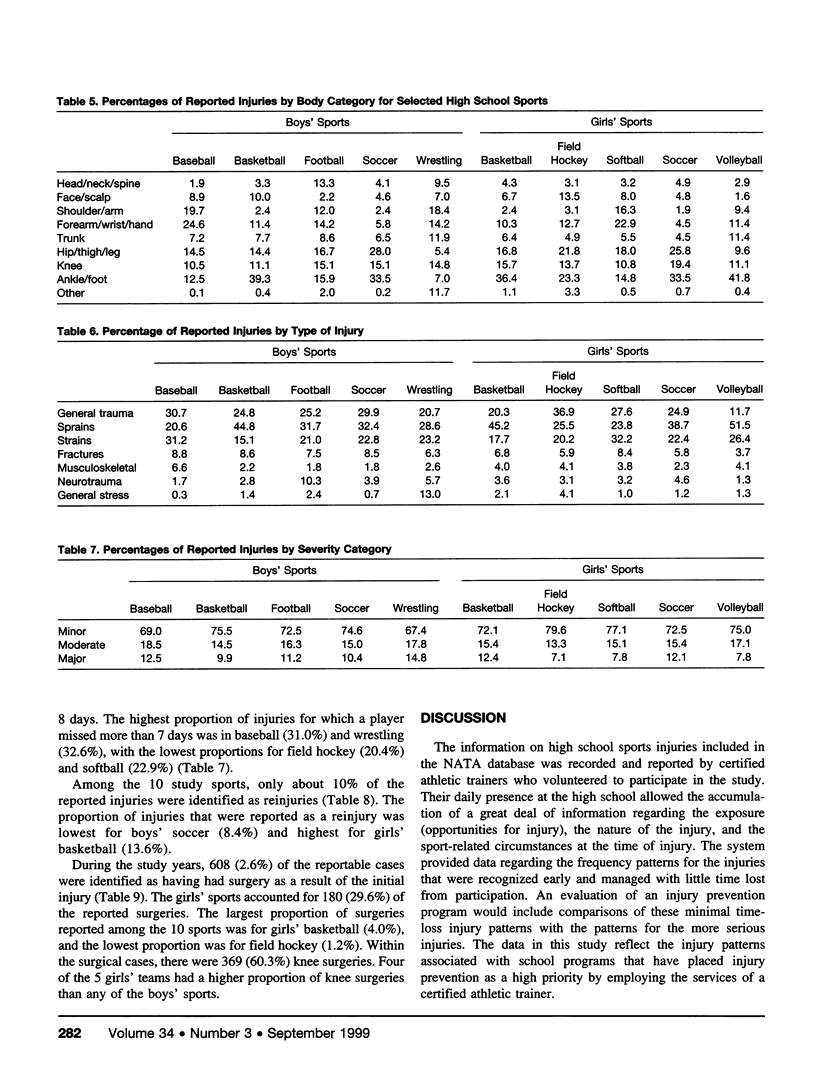
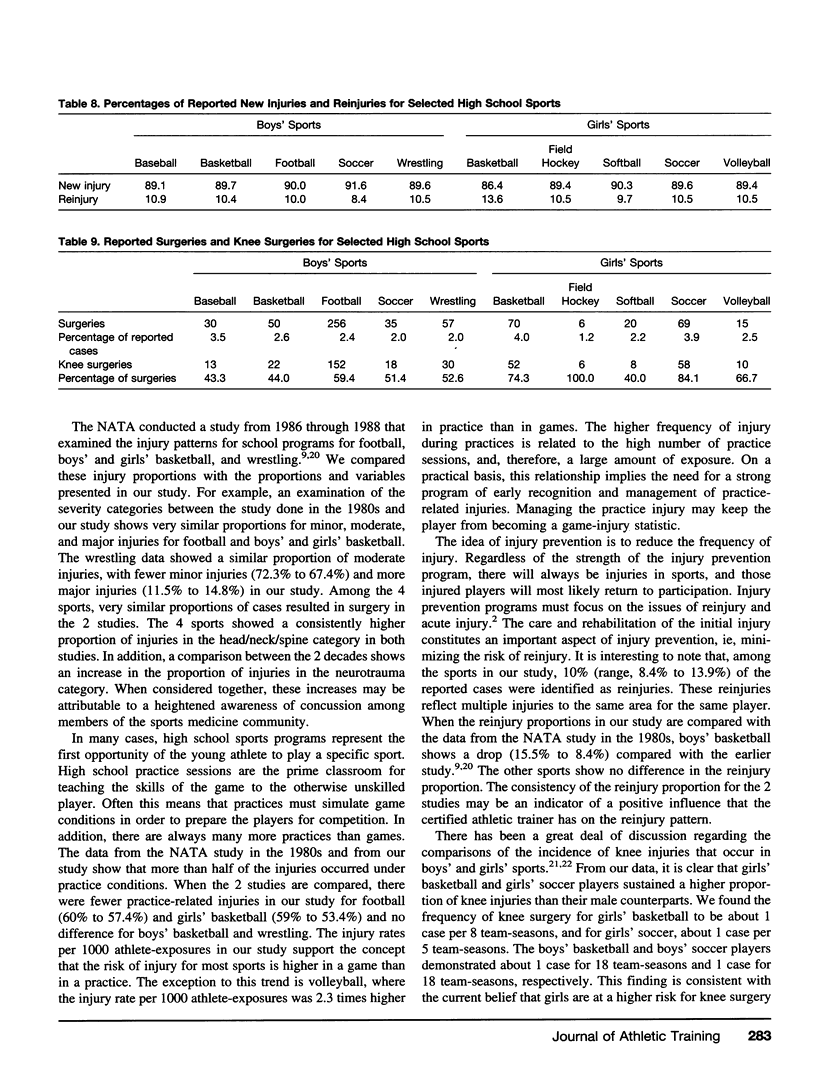
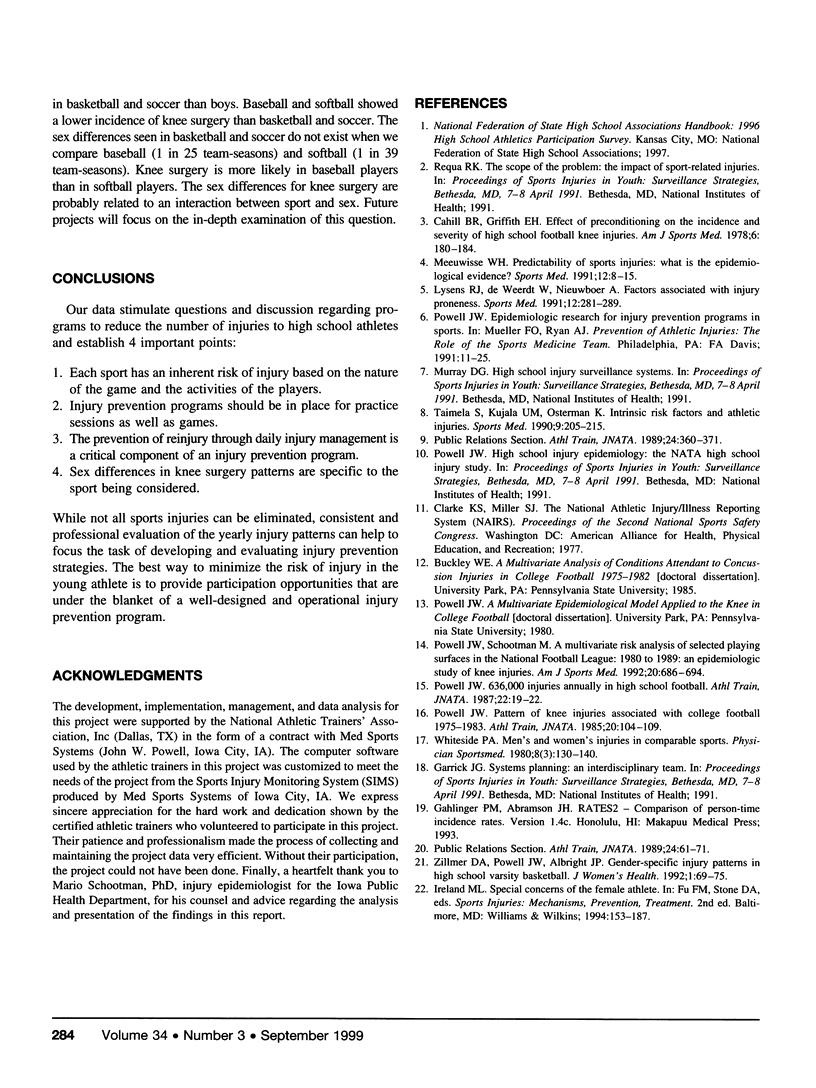
Images in this article
Selected References
These references are in PubMed. This may not be the complete list of references from this article.
- Cahill B. R., Griffith E. H. Effect of preseason conditioning on the incidence and severity of high school football knee injuries. Am J Sports Med. 1978 Jul-Aug;6(4):180–184. doi: 10.1177/036354657800600406. [DOI] [PubMed] [Google Scholar]
- Lysens R. J., de Weerdt W., Nieuwboer A. Factors associated with injury proneness. Sports Med. 1991 Nov;12(5):281–289. doi: 10.2165/00007256-199112050-00001. [DOI] [PubMed] [Google Scholar]
- Meeuwisse W. H. Predictability of sports injuries. What is the epidemiological evidence? Sports Med. 1991 Jul;12(1):8–15. doi: 10.2165/00007256-199112010-00002. [DOI] [PubMed] [Google Scholar]
- Powell J. W., Schootman M. A multivariate risk analysis of selected playing surfaces in the National Football League: 1980 to 1989. An epidemiologic study of knee injuries. Am J Sports Med. 1992 Nov-Dec;20(6):686–694. doi: 10.1177/036354659202000609. [DOI] [PubMed] [Google Scholar]
- Taimela S., Kujala U. M., Osterman K. Intrinsic risk factors and athletic injuries. Sports Med. 1990 Apr;9(4):205–215. doi: 10.2165/00007256-199009040-00002. [DOI] [PubMed] [Google Scholar]




